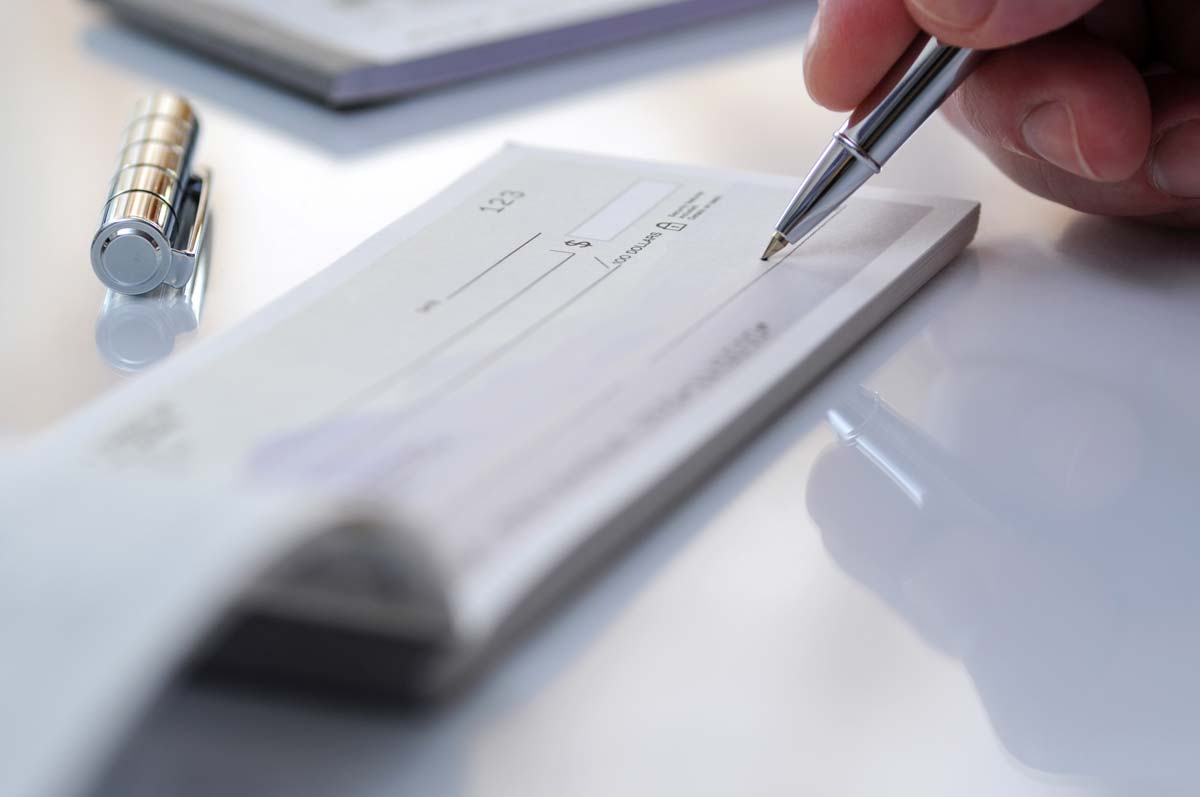No one wants to be the victim of credit fraud. Aside from the stolen money you may never recover, victims of fraud can be faced with an enormous hassle. That hassle involves the closing of accounts, putting a fraud alert on your credit and a huge ding on your credit history, which can be difficult to fix.
What happened and who is to blame for the fraud? When we’re talking about credit card fraud, everyone’s pointing fingers at everyone else.
Consumers tend to blame the credit card issuer, but the vulnerability usually lies with the point-of-sale terminal. Tampering with a credit card reader takes just a few minutes and can be done with an inexpensive device that’s available online. In addition, there are lots of other ways your information can be skimmed, none of which point to a security deficiency with your credit union or credit card company.
Thankfully, there are steps you can take to prevent and recognize credit card fraud before it happens. Read on for all you need to know about credit card fraud.
How Your Information is Stolen
There are a variety of ways that scammers access and steal your credit card information. They might steal the physical credit card, copy the information on the card, or even hack the transmissions that enable your credit card to have the tap to pay feature. These are some of the most popular ways for your information to be stolen.
1. It’s physically lifted from your wallet.
The old-fashioned pickpocket is still a very real threat. Invest in a secure wallet and/or purse and always keep your card inside. RFID skimming now also allows trackers to steal information just by being in close range of your credit card – this is how the electronic information from the tap to pay service is stolen.
2. A restaurant or bar server skims it.
When you hand over your card to a dishonest server at the end of a meal, you give them a few minutes to skim your card while it’s in their possession.
3. A terminal you use is compromised.
Payment terminals can be tampered with and rewired to transmit your information to scammers. Inserts can also be placed over top of the current terminal. This is especially common in pay-at-the-pump gas stations.
4. An online breach puts your information on the black market.
Companies keep a history of transactions and often have a database of customer information. After a company you use suffers a breach, your personal information may be up for sale on the dark web to be utilized for fraud.
5. Your computer’s been hacked.
Once a scammer gets inside your computer, they have full access to all of your sensitive data. This can happen if you allow the scammer to access your system remotely or by clicking on a nefarious link or file attachment.
signs a terminal has been compromised
There may be some signs that a payment terminal has been compromised. If you can recognize these signs, you’ll be able to prevent your information from falling into the hands of scammers.
1. The security seal has been voided.
Many gas stations have joined the war against credit card crimes by placing a security label across the pump. When the pump is safe to use, the label has a red, blue or black background. When it’s been breached, the words “Void Open” will appear in white.
2. The card reader doesn't fit the machine.
The card reader is created to fit perfectly on top of the machine. If it protrudes past the machine or sits unevenly, it’s likely been tampered with. This is especially true if you find the reader or parts of the terminal to be loose.
3. The pin pad looks newer than the rest of the machine.
If the pin pad looks newer than everything else, there may be reason to be concerned. The entire machine should be in a similar condition or at least match any of the same machines nearby.
4. The pin pad looks raised.
If the pin pad looks abnormally high compared to the rest of the machine, the card reader may have been fitted with a new pin pad that will record your keystrokes. This enables the scammers to steal your pin code or zip code to utilize the card.
Risks for Credit Card Fraud
There are some situations that may put you at a higher risk of experiencing credit card fraud. These risks may be due to your own actions or from circumstances beyond your control. It’s important to identify if you are at any additional risk so you can take further action to prevent credit card fraud.
1. You lost your card.
If you misplaced your card – even if it was eventually returned to you – there’s a chance your information has been skimmed and can be used for fraud.
2. You’re visiting an unfamiliar area.
When patronizing a business in an unfamiliar neighborhood, you don’t know who you can trust. This can be especially true when visiting foreign countries, as tourists are the targets of many scammers.
3. A company you use has been breached.
If a business you frequent has been compromised, you may be at risk of fraud. You'll need to watch for any notices about what information has been breached and carefully monitor your credit for suspicious activity.
4. You shared your information online.
If you’ve willingly or unwillingly shared sensitive information online and you’re not certain of the contact’s authenticity, you’re likely to be the victim of fraud.
5. You downloaded something from an unknown source.
Have you accidentally downloaded an attachment from an unknown source? Did you click on an unknown link? Then your computer has likely been compromised and you’re at risk for credit card fraud.
How to Prevent Credit Card Fraud
Being proactive in preventing fraud can have far reaching impacts. It’s important to take steps to prevent credit card theft and to reduce the risk of your information being used for fraud. Here are some ways that you can keep your credit card and information safe:
1. Check card readers.
Before paying, it's important to check for signs of tampering. If you are unsure about the terminal, don’t be afraid to reach out to employees or compare to other terminals at the business
2. Never share your credit card information online.
Unless you’re absolutely sure the website you’re using is authentic and the company behind it is trustworthy, you should never share your credit card information online. Before making any online payments, ensure that there is a lock symbol next to the website url to make sure that the website is secure.
3. Check your monthly credit card statements.
Each monthly, check your credit card statements for suspicious activity and review your credit reports on a frequent basis. Catching the fraud early can help save you time, money, and the stress of repairing the damage caused by the fraudsters.
4. Use cash to pay.
When patronizing a business that’s in an unfamiliar area, use cash to pay to ensure that your information is kept safe from any scammers.
5. Don’t download attachments or click on links from unknown sources.
Avoid downloading any attachments or clicking on links that have been sent from unknown sources. Make sure to verify the email or website addresses and look for any potential typos or mistakes before opting to click or download.
6. Utilize identity theft protection services.
There are services available to help keep your information safe from identity theft and credit card fraud. These services will alert you to any suspicious activity on your credit and may even be able to notify you of any breached personal information. Wasatch Peaks is proud to offer Ultimate ID® identity theft protection with our Benefits Plus® service, available to anyone with a Wasatch Peaks checking account.
What to Do if Your Card is Stolen
If you’ve found out that your card has been stolen, don’t panic! Identifying fraud early can help minimize the impact and damage that the fraud has on your information. Take a deep breath and start working through these steps to prevent any further fraudulent action on the card.
1. Lock or close the compromised account.
Contact your credit card provider to take action on your card. You'll need to cancel and replace your card, dispute any fraudulent charges on your comprised accounts, and you may even need to close or reopen your account.
2. Place a fraud alert on your credit reports.
Placing a fraud alert on your credit report will require lenders to contact you before issuing any new credit in your name. This will make it impossible for the scammer to open a line of credit in your name. You'll need to contact one of the three major credit bureaus to place the fraud alert and they will then notify the other two.
3. Consider a credit freeze.
Another options is to place a credit freeze on your credit report. This limits the access to your credit report and won't allow any new credit to be opened in your name. You'll need to contact each of the three credit bureaus individually to place a credit freeze on your information.
4. Alert the FTC.
Another important step to take if your information has been stolen is to alert the Federal Trade Commission (FTC). Visit identitytheft.gov to report the crime.
For a more in-depth look at identity theft and how to proceed if your credit card or personal information has been stolen, check out our guide to identity theft recovery.
Preventing and recognizing credit card theft can make a big difference in the risk and damage done. Be proactive to prevent any fraud from occurring and take quick action if you find any indicators that you may have become a victim of credit card fraud!



